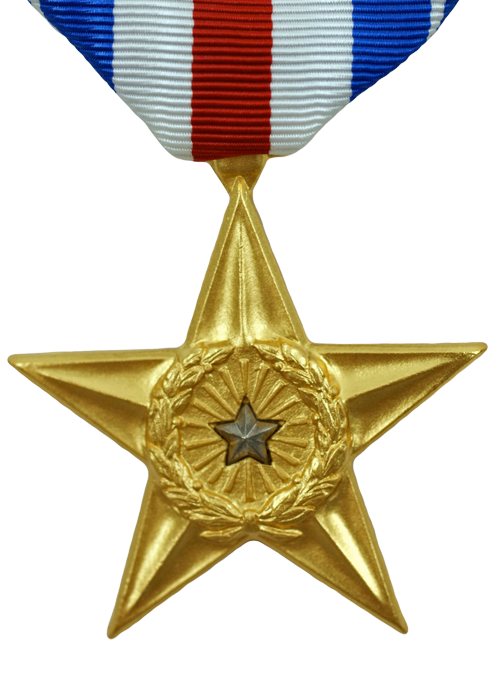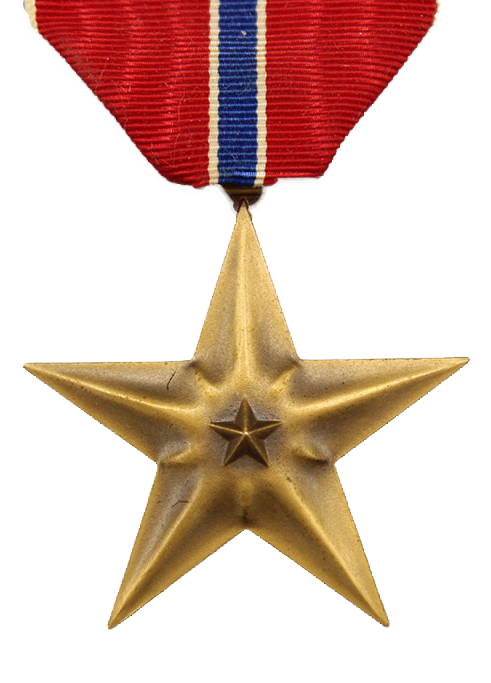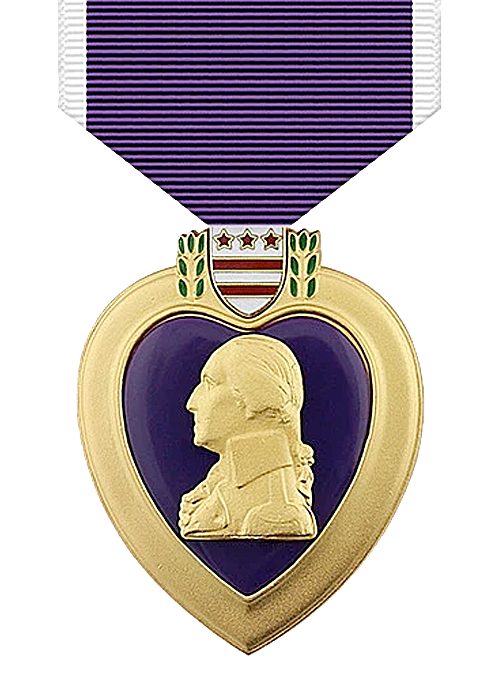
Life and death of George S. Patton Jr.
Life and death of George S. Patton Jr., the facts
The most evocative Allied officer from the Second World War George Smith Patton Jr. was born in San Gabriel, in the state of California in the United States of America on November 11, 1885. Patton was the scion of a wealthy California family and made his career as an American general who became known in WW2 for his brutal actions and successful rescue operation in the Battle of the Bulge.
Family and younger years
Patton's grandfather was a soldier in the Confederate army during the American Civil War. Patton was born in San Gabriel, California and was educated at Virginia Military Institute and West Point. From childhood, Patton had the desire to become a general and hero. An intelligent child, he had an interest in classical literature and military history from an early age, but struggled with basic skills during his primary education, a problem that continued to haunt him during his later military education. As a child he learned to read late and had difficulty with spelling, for example: according to modern insights, this probably indicated a form of dyslexia. After graduating from West Point, Patton competed in the 1912 Summer Games in Stockholm, where he represented the US at the modern pentathlon. He finished fifth.
Patton, according to a poem written by him, believed in reincarnation: he thought he was a reincarnation of General Hannibal, a legionnaire, a general, and other historical military figures.
First World War
At the start of the American participation in World War I in 1917, his (later) superior, General Pershing, promoted Patton to the rank of captain. During his stay in France, Patton asked for a position at the front. He was assigned to the Panzer troops and was assigned to the British Tank Corps during their victory in the Battle of Cambrai. This was the first battle where tanks were used as the main combat weapon. Thanks to his successes and the establishment of a training for tank personnel in Langres, France, Patton was promoted to lieutenant colonel and became responsible for the US Tank Corps of the US First Army. He took part in the Meuse-Argonne Offensive from September 26 to November 11, 1918 and was wounded by machine gun fire near the village of Cheppy. For his services in World War I, he was awarded a Purple Heart, a Distinguished Service Cross, and was promoted to the temporary rank of Colonel.
1918-1941
In the early 1920s, Patton petitioned the United States Congress for funding for an armored division. He was unsuccessful. He also wrote professional articles on tank and armor tactics and suggested new methods of using these weapons. He continued to work on improving the tank.
Before leaving for Washington to request financial support for armored troops again, he served in Hawaii. In the late 1930s he was assigned to the command of Fort Myer, Virginia. During the build-up of the United States Army on the eve of World War II, Patton founded the Desert Training Center in Indio, California.
Second World War
Shortly after Germany's Blitzkrieg in Western Europe, when the US was not yet participating in the war, Patton convinced Congress of the need for the US to have armored forces, pointing, among other things, to the successes of the German armored forces in the French campaign . Shortly after this commitment, he was promoted to brigadier general of the newly established armored brigade. The brigade was soon expanded to the US 2nd Armored Division, and Patton was promoted to Major General.
North-Africa
In 1942 Major General Patton led the American Western Task Force, which landed on the coast of Morocco during Operation Torch. After the 2nd US Army Corps (Maj. Gen. L.R. Fredendall) was defeated by the German General Erwin Rommel at Kasserine (1943), Patton was promoted to Lieutenant General and given command of the 2nd Army Corps. Although he was harsh in his training and education, he was generally seen as fair and fair to his troops. The discipline worked. The March 1943 counter-offensive pushed the German forces east, while British General Bernard Montgomery from Egypt pushed the Germans west at the same time.
Italy
As a result of his successes in North Africa, Patton was put in command of the US 7th Army in preparation for the Landing in Sicily. Montgomery's 8th British Army was to capture the east of the island, covered on the left flank by Patton who landed in the Gulf of Gela. Dissatisfied with the plan of attack and the subordinate role for the Americans in it, Patton stormed with his army through the west to the north of the island and liberated Palermo. After this he drove on to Messina, where he arrived before Montgomery despite fierce German resistance.
Patton's bloodthirsty speeches resulted in the killing of 73 prisoners of war by his soldiers. Another incident nearly cost him his career. On a visit to a field hospital in August 1943, he beat and insulted soldiers Paul G. Bennet and Charles H. Kuhl, who he believed were cowards. The soldiers in question suffered from shell shock. Because of his action, Patton was kept out of publicity for a long time and he had to apologize to the soldiers. Patton was relieved of command and his army came under the command of Lieutenant General Clark. As the US 5th Army, it conquered Italy after a difficult battle under Clark's leadership.
Although temporarily relieved of his duties, the Germans continued to fear Patton more than other Allied commanders. His extended stay in Sicily was interpreted by the Germans as an indication of an imminent invasion of southern France and later his stay in Cairo was seen as an indication of a landing in the Balkans. The fear of General Patton contributed to the tying up of the Germans for months, which would prove to be a major factor in the months that followed.
Normandy
In the period leading up to Operation Overlord, Patton gave public lectures as Commander in Chief of the (fictional) 1st American Army Group (FUSAG), which was to attack the French coast at Calais. All of this was part of an Allied diversion campaign, Operation Fortitude.
Immediately after the Normandy invasion, Patton was given command of the 3rd Army, which formed the far right flank (west) of the ground forces. He led this army during Operation Cobra, the outbreak of troops from the Normandy bocage and the attack on Avranches, and then went south and east, capturing several hundred thousand German soldiers. Patton here used the Germans' Blitzkrieg tactic against themselves, advancing nearly 1,000 kilometers in two weeks.
Lorraine
However, Patton's offensive came to a halt on September 1, 1944 near the city of Metz near the river Meuse, when his army was simply out of fuel. The time to replenish the army was just enough for the German troops to tighten their positions around Metz. In October and November the 3rd Army was engaged in heavy fighting with the Germans with heavy losses on both sides. On November 23, however, Metz fell, for the first time since the Franco-Prussian War.
Battle of the Bulge
At the end of 1944, the German army struck back one more time in Belgium, Luxembourg and northeastern France with Operation Wacht am Rhein, better known as the "Ardennes Offensive", in a last-ditch attempt to recapture Antwerp. On December 16, 1944, the Germans with 30 divisions made a hole in the Allied lines and moved towards the Maas.
Patton immediately headed north with the 3rd Army, a tactical and logistical tour de force, to relieve the Allied airborne troops at Bastogne, surrounded by the Germans. Soon, fresh American troops and supplies arrived and the German positions were shortened. The German troops withdrew towards the German border. By February, the Germans had completely withdrawn behind the original German border. Patton pursuing them entered the Saar. His armored troops raced through southern Germany to the Czech border, without encountering serious opposition from the rapidly disintegrating German army. Patton planned to liberate Prague when US forces were stopped by the high command bound by the territorial agreements made with the Soviets at the Yalta conference. Despite this, he captured the city of Pilsen and most of Western Bohemia. As a true communist eater, he also repeatedly suggested that the remainder of the German army should immediately head east to fight the Soviets. This was also the proposal of Karl Dönitz, the chairman of the so-called Flensburg government (the successor of the Nazi regime and Hitler who had since committed suicide), who wanted to surrender to the Western Allies but not to the Soviets.
The Western Allies didn't see much of that, they just accepted an unconditional surrender to all Allies including the Soviets, and ordered Patton to keep his opinions to himself. After the final victory over Germany, he really wanted to go to the Pacific Ocean to fight the Japanese there. Given the equally short temper of the commander in the Pacific, Douglas MacArthur, the High Command wisely decided not to heed this. Two such 'prima donna's' in the same area seemed like a recipe for infighting.
After the war and death
In October 1945, Patton was placed in command of the 15th United States Army in the US sector of Germany. In 1945 he was relieved of his duties by the Allied High Command and recalled to the US. In November 1945, a month before his death, he visited Sweden where he had an interview with the Swedish army chief General Archibald Douglas (1883-1960) and with custodian Carl Bonde in the villa "Täcka Udden" of the Wallenberg family in Stockholm. He also had an informal conversation with King Gustav V of Sweden.
In December 1945, one day before he was due to fly back to the US, Patton's car was rammed into a truck. Patton became paralyzed up to his neck and died on December 21, 1945 in a hospital in Heidelberg from pulmonary edema and heart failure. Patton lived to be sixty years old. He was buried in the American war cemetery in Hamm, part of the city of Luxembourg, capital of the Grand Duchy of Luxembourg, where admirers of the general still pay tribute to him every year.

-
Born: 11 november 1885
-
San Gabriel, Californië, USA
-
Died: 21 december 1945
-
Heidelberg, Baden-Württemberg, Germany
General of the Army






